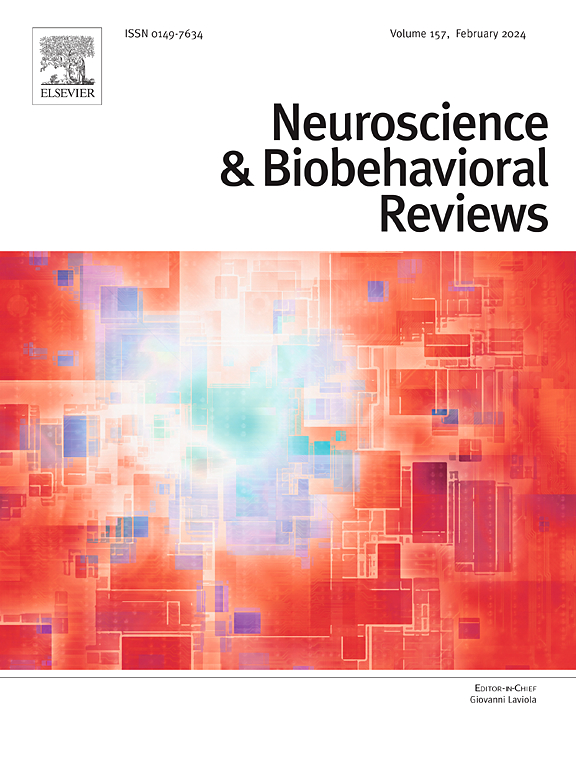新型精神活性物质与精神病:流行病学、临床特征、神经生物学和治疗的综合系统综述。
IF 7.9
1区 医学
Q1 BEHAVIORAL SCIENCES
引用次数: 0
摘要
背景:新型精神活性物质(NPS)在世界范围内的流行率越来越高,尽管临床越来越关注,但其与精神疾病的关系仍不完全明确。目的:系统评价nps相关性精神病的流行病学证据、临床特征、神经生物学机制、易感因素及治疗方法。方法:从2005年1月到2022年12月,遵循PRISMA指南对五个主要数据库进行了全面的系统评价。使用纽卡斯尔-渥太华量表和乔安娜布里格斯研究所检查表进行质量评估。在最初确定的684项记录中,有85项研究符合纳入标准,包括病例报告/系列研究(n=38)、回顾性队列研究(n=25)、横断面研究(n=10)、病例对照研究(n=7)、实验研究(n=3)和前瞻性队列研究(n=2)。结果:流行病学证据一致表明,与传统物质相比,NPS的精神病风险更高(合成大麻素与大麻的OR为4.4-5.2)。不同的临床特征出现了:合成大麻素引起的“香料精神分裂症”以视觉幻觉(73-84%)、躁动(79-91%)和焦虑(62-76%)为特征;卡西酮诱发的精神病表现为极度躁动(81-94%)和刻板行为(47-63%);苯乙胺诱导的状态表现为知觉障碍,包括联觉(37-54%)。神经生物学研究表明,不同物质类别的机制不同。主要的易感因素包括先前存在的精神疾病、青少年接触和多种物质使用。结论:NPS的使用与精神病风险升高和不同药物类别的不同临床表现有关。需要标准化的评估方法和严格的纵向调查,以更好地确定因果关系,完善特定物质的治疗方案,并制定有针对性的预防战略。本文章由计算机程序翻译,如有差异,请以英文原文为准。
Novel psychoactive substances and psychosis: A comprehensive systematic review of epidemiology, clinical features, neurobiology, and treatment
Background
Novel psychoactive substances (NPS) have shown increasing prevalence worldwide, yet their relationship with psychotic disorders remains incompletely characterized despite growing clinical concern.
Objective
To systematically evaluate the epidemiological evidence, clinical characteristics, neurobiological mechanisms, vulnerability factors, and management approaches for NPS-associated psychosis.
Methods
A comprehensive systematic review following PRISMA guidelines was conducted across five major databases from January 2005 through December 2022. Quality assessment was performed using the Newcastle-Ottawa Scale and Joanna Briggs Institute checklist. Of 684 initially identified records, 85 studies met inclusion criteria, comprising case reports/series (n = 38), retrospective cohort studies (n = 25), cross-sectional studies (n = 10), case-control studies (n = 7), experimental studies (n = 3), and prospective cohort studies (n = 2).
Results
Epidemiological evidence consistently suggested higher psychosis risk with NPS compared to traditional substances (OR 4.4–5.2 for synthetic cannabinoids versus cannabis). Distinctive clinical profiles emerged: synthetic cannabinoid-induced "spiceophrenia" featured visual hallucinations (73–84 %), agitation (79–91 %), and anxiety (62–76 %); cathinone-induced psychosis presented with extreme agitation (81–94 %) and stereotyped behaviors (47–63 %); phenethylamine-induced states showed perceptual disturbances including synesthesia (37–54 %). Neurobiological investigations indicated different mechanisms across substance classes. Key vulnerability factors included pre-existing psychiatric conditions, adolescent exposure, and polysubstance use.
Conclusion
NPS use is associated with elevated psychosis risk and distinctive clinical presentations across substance classes. Standardized assessment approaches and rigorous longitudinal investigations are needed to better establish causality, refine substance-specific treatment protocols, and develop targeted prevention strategies.
求助全文
通过发布文献求助,成功后即可免费获取论文全文。
去求助
来源期刊
CiteScore
14.20
自引率
3.70%
发文量
466
审稿时长
6 months
期刊介绍:
The official journal of the International Behavioral Neuroscience Society publishes original and significant review articles that explore the intersection between neuroscience and the study of psychological processes and behavior. The journal also welcomes articles that primarily focus on psychological processes and behavior, as long as they have relevance to one or more areas of neuroscience.

 求助内容:
求助内容: 应助结果提醒方式:
应助结果提醒方式:


